8 Fascinating facts about the St. Peter’s basilica in Vatican City
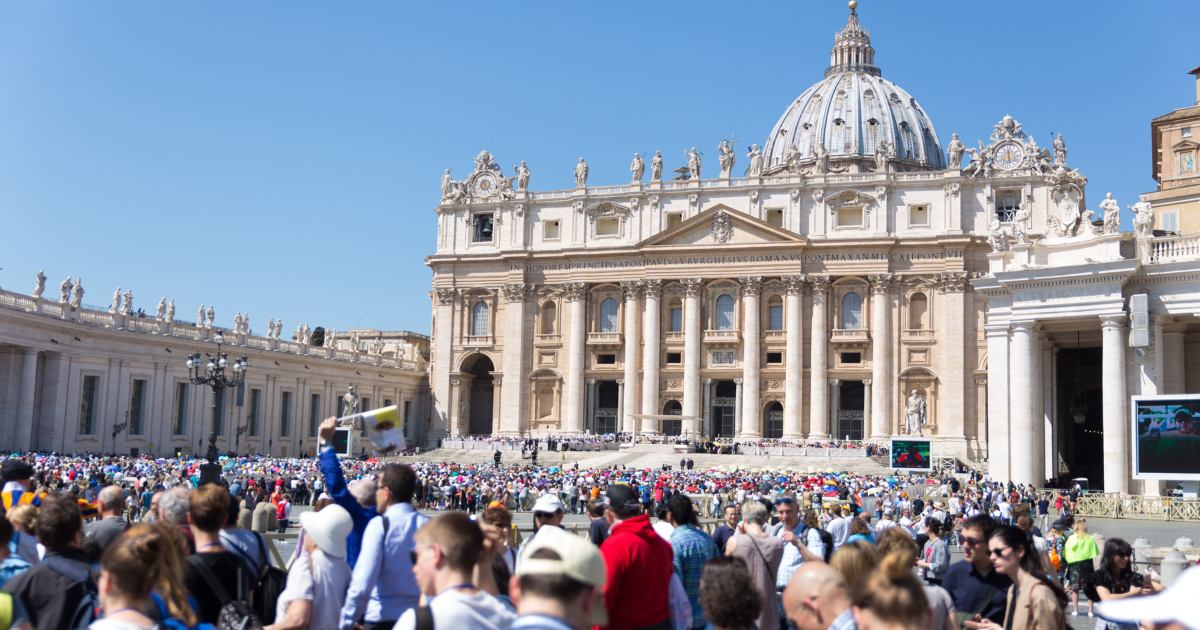
Introduction
Discover 8 fascinating facts about St. Peter’s Basilica in Vatican City. Learn about its history, architecture, and must-see attractions for a memorable visit.
Tools
Supplies
8 Facts About St. Peter’s Basilica
St. Peter’s Basilica, the crowning glory of Vatican City, is a masterpiece of Renaissance architecture and a pivotal site for the Roman Catholic Church. Every year, millions of visitors from around the globe flock to this monumental church, eager to witness its grandeur and explore its historical and spiritual significance. Whether you’re planning a visit or just intrigued by its rich history, here are eight fascinating facts about St. Peter’s Basilica that will surely captivate your interest.
1. The Dome’s Height and Architecture
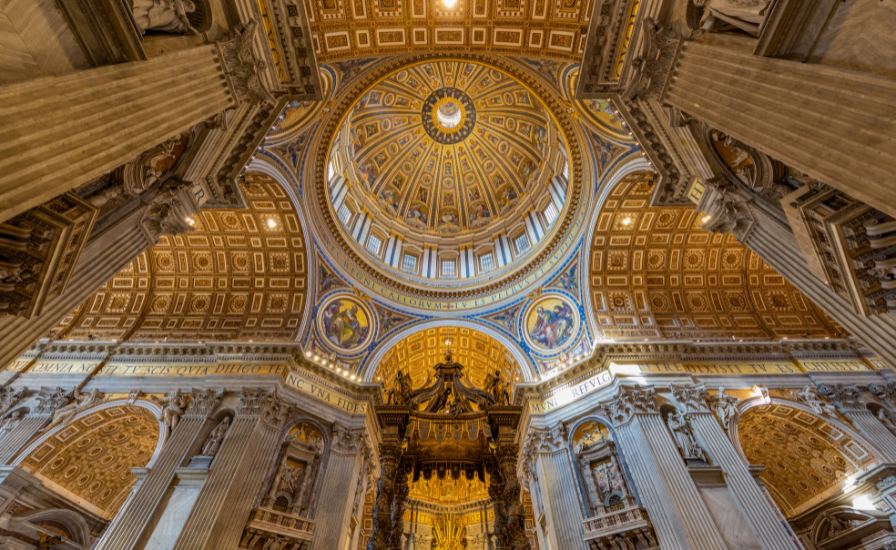
When you first glimpse St. Peter’s Basilica, it’s impossible to miss its stunning dome. But did you know that this dome is one of the tallest in the world? Designed by Michelangelo, the St. Peter’s Basilica dome stands at a staggering 136 meters (448 feet) from the floor of the basilica to the top of the cross. This makes it slightly taller than the dome of St. Paul’s Cathedral in London.
The architecture of the dome is a marvel. Michelangelo took over the project at age 71, and despite his advanced age, he managed to design one of the most iconic domes in architectural history. The dome was completed after his death by Giacomo della Porta, who made slight modifications to Michelangelo’s original design. If you’re planning a visit, consider purchasing St. Peter’s Basilica dome tickets to experience the breathtaking views from the top.
2. The Site’s Ancient Origins
One of the most fascinating facts about St. Peter’s Basilica is that it stands on the site believed to be the burial place of St. Peter, one of Jesus’ apostles and the first Pope. The original basilica was constructed by Emperor Constantine in the 4th century over what was believed to be St. Peter’s tomb. Excavations conducted in the mid-20th century uncovered a necropolis under the basilica, where St. Peter’s remains are said to be housed.
This ancient heritage adds a profound layer of spiritual significance to the basilica, making it a sacred pilgrimage site for Christians around the world. When you walk through its grand halls, you’re treading on ground that has been venerated for nearly two millennia.
3. The Lengthy Construction Process
The construction of the current St. Peter’s Basilica began on April 18, 1506, under Pope Julius II, and it took 120 years to complete, finishing in 1626. The lengthy process involved some of the greatest artists and architects of the Renaissance period, including Bramante, Raphael, Michelangelo, and Bernini.
One reason for the extended construction period was the sheer scale and ambition of the project. The basilica was intended to be the grandest church in Christendom, reflecting the glory and power of the Catholic Church. The involvement of multiple popes and changes in architectural plans also contributed to the timeline. Despite the delays, the result is a testament to human ingenuity and devotion.
4. Michelangelo’s Pietà
Inside St. Peter’s Basilica, you’ll find one of Michelangelo’s most famous sculptures, the Pietà. Created when Michelangelo was only 24 years old, this exquisite marble statue depicts the Virgin Mary holding the dead body of Jesus after his crucifixion. The sculpture is renowned for its beauty, detail, and emotional depth.
The Pietà is housed in a bulletproof glass case after an unfortunate incident in 1972, when a man attacked the statue with a hammer. Despite this, the Pietà remains one of the most visited and admired pieces of art in the basilica. When you visit, be sure to take advantage of a St. Peter’s Basilica audio guide to learn more about this and other masterpieces within the church.
5. The Bernini Baldachin
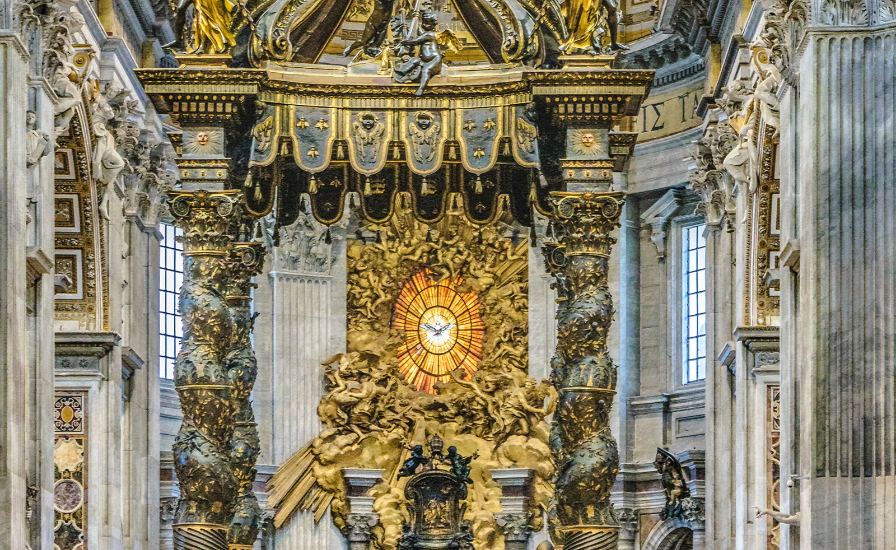
Gian Lorenzo Bernini, another giant of the Baroque period, contributed significantly to St. Peter’s Basilica with his creation of the Baldachin, a massive bronze canopy that stands over the high altar and the tomb of St. Peter. The Baldachin is 28 meters (92 feet) tall and is a stunning example of Baroque art, with its intricate details and dynamic forms.
The bronze for the Baldachin was sourced from the Pantheon, a controversial decision at the time but one that added to the grandeur of the piece. The Baldachin not only serves as a focal point in the basilica but also symbolizes the church’s authority and the connection to its ancient past.
6. The Treasury and Relics
St. Peter’s Basilica is home to a vast treasury of religious artifacts and relics. Among these is the Chair of St. Peter, a relic that is housed in the apse of the basilica. This wooden chair, encased in bronze by Bernini, is believed to have been used by St. Peter himself.
Visitors can explore these treasures by taking a St. Peter’s Basilica cupola guided tour, which provides access to areas not usually open to the public. These tours offer a deeper insight into the history and significance of the basilica’s relics and artifacts, making your visit even more enriching.
7. The Swiss Guard
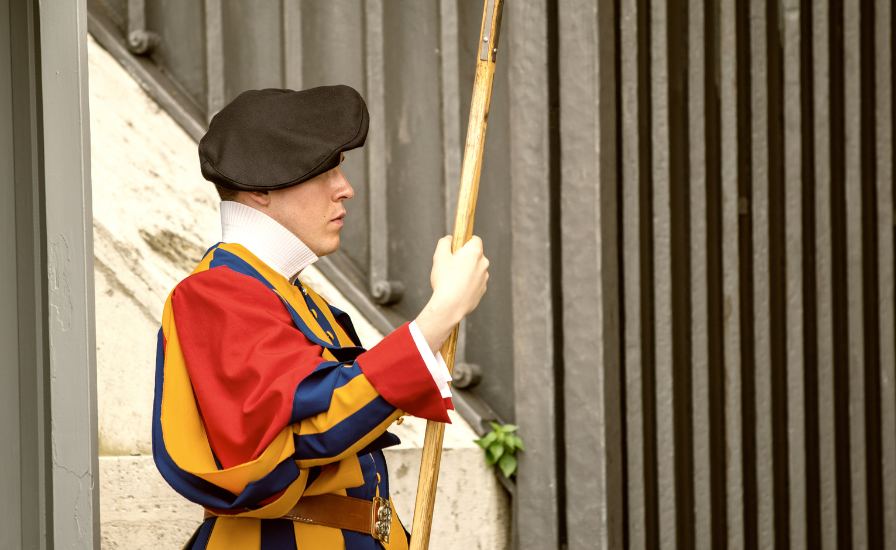
The Swiss Guard, with their colorful uniforms and medieval weaponry, are a unique and iconic presence at St. Peter’s Basilica. Established in 1506, the Swiss Guard is the oldest standing army in the world and serves as the personal bodyguard to the Pope. Their distinctive uniforms were designed by Commandant Jules Repond in 1914 and are inspired by Renaissance fashion, often mistakenly attributed to Michelangelo.
The Swiss Guard are not just ceremonial; they are highly trained soldiers responsible for the safety of the Pope and Vatican City. Witnessing the Swiss Guard in their full regalia is a highlight for many visitors, adding a touch of historical pageantry to your visit.
8. The Papal Altar and Confessio
At the heart of St. Peter’s Basilica lies the Papal Altar, also known as the Altar of the Confession. This altar is reserved for the Pope and is located directly above the tomb of St. Peter. The area beneath the altar, called the Confessio, contains a repository for numerous relics and is a deeply venerated site.
The Papal Altar is adorned with precious materials and surrounded by the magnificent Bernini Baldachin, creating a visual and spiritual focal point in the basilica. Attending a mass or simply spending a moment in prayer here is a profound experience for many visitors, offering a connection to the spiritual roots of the Catholic Church.
Planning Your Visit
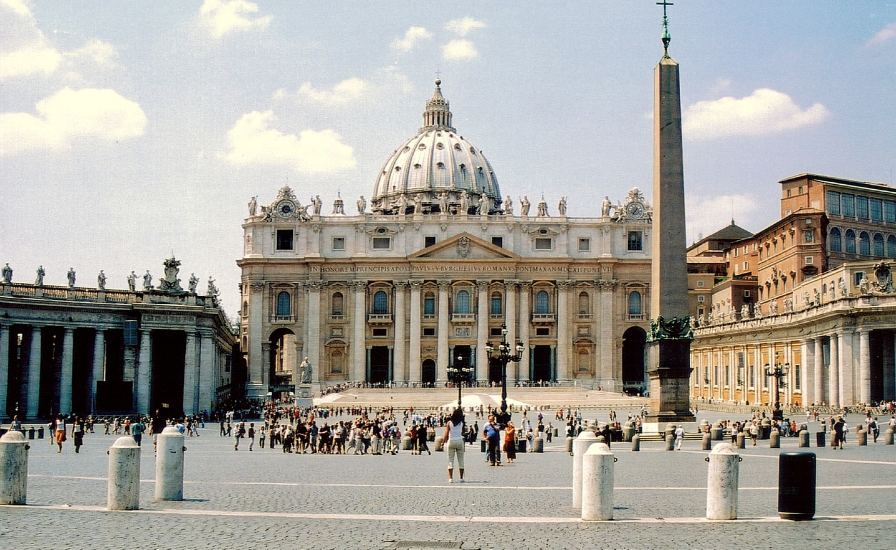
Now that you’re armed with these fascinating facts about St. Peter’s Basilica, planning your visit becomes even more exciting. Here are some practical tips to enhance your experience:
Getting St. Peter’s Basilica Dome Tickets
To fully appreciate the architectural splendor of St. Peter’s Basilica, make sure to purchase St. Peter’s Basilica dome tickets. Climbing to the top of the dome offers unparalleled views of Vatican City and Rome. The climb involves about 551 steps, but there is an elevator option that takes you partway up, reducing the number of steps to 320. The effort is well worth it for the breathtaking panorama.
Taking a St. Peter’s Basilica Cupola Guided Tour
For a more in-depth exploration, consider booking a St. Peter’s Basilica cupola guided tour. These tours provide expert insights into the history, art, and architecture of the basilica, giving you a deeper understanding of its significance. Guided tours often include access to areas not typically open to the public, such as the necropolis and the Vatican Grottoes.
Utilizing a St. Peter’s Basilica Audio Guide
An excellent way to ensure you don’t miss any details is to use a St. Peter’s Basilica audio guide. These guides are available in multiple languages and provide comprehensive information about the basilica’s history, artwork, and architecture. They allow you to explore at your own pace while still gaining valuable insights.
Visiting Hours and Tips
St. Peter’s Basilica is open year-round, but the best time to visit is early in the morning or late in the afternoon to avoid the crowds. Dress modestly, as it is a place of worship, and be prepared for security checks at the entrance. Admission to the basilica itself is free, but there are fees for accessing certain areas, such as the dome and the treasury.
Best Time to Visit
Early Mornings and Late Afternoons: To avoid the crowds, the best times to visit St. Peter’s Basilica are early in the morning right when it opens (usually around 7:00 AM) or later in the afternoon before it closes (typically around 7:00 PM in the summer and 6:30 PM in the winter). This is also the best time for taking photos with fewer people around.
Navigating Security
Security Checks: Like most major attractions, St. Peter’s Basilica has security checks. The lines can get long, especially during peak hours. Arriving early can help you avoid long waits. Remember that certain items such as large bags, umbrellas, and sharp objects are not allowed inside.
Accessibility
Wheelchair Access: St. Peter’s Basilica is wheelchair accessible. There are ramps and elevators available for those with mobility issues. The elevator to the dome is also accessible, although it only takes you to the roof level, from where there are additional steps to reach the very top.
Dress Code
Modest Clothing: Visitors to St. Peter’s Basilica are required to adhere to a strict dress code. Shoulders and knees must be covered, and hats should be removed inside the basilica. This applies to both men and women. If you arrive unprepared, some vendors outside the basilica sell scarves and wraps.
Ticket Information
Free Entry to the Basilica: Entry to St. Peter’s Basilica is free, but tickets are required for certain areas such as the dome, the Vatican Grottoes, and the Necropolis. Purchasing tickets in advance online can save time and avoid disappointment, especially for the more exclusive areas like the Necropolis.
Guided Tours
Taking a guided tour can greatly enhance your experience. Knowledgeable guides provide detailed information and context that you might miss on your own. Many guided tours also include skip-the-line access, which can save you considerable time.
Audio Guides
An audio guide is a great option if you prefer to explore at your own pace but still want to learn about the basilica’s history and art. Audio guides are available for rent inside the basilica, and many are offered in multiple languages.
Photography Tips
Respectful Photography: Photography is allowed in most parts of St. Peter’s Basilica, but be respectful of worshippers and avoid using flash. The best places for photos are from the dome, where you get a panoramic view of Vatican City and Rome, and the nave, where you can capture the grandeur of the interior.
Visiting the Vatican Grottoes
Exploring the Vatican Grottoes: The Vatican Grottoes, located beneath the main floor of the basilica, house the tombs of many popes and important religious figures. Access to the grottoes is free, and it provides a serene and contemplative experience away from the crowds.
The Necropolis Tour
Exclusive Necropolis Tour: For a truly unique experience, book a tour of the Vatican Necropolis, which lies beneath the basilica and includes the reputed tomb of St. Peter. This tour requires advance booking as it is limited to small groups and is highly popular.
Papal Audience
Attending a Papal Audience: If you’re interested in seeing the Pope, you can attend a Papal Audience, usually held on Wednesday mornings. Tickets are free but need to be reserved in advance through the Prefecture of the Papal Household. This is a special experience and adds a memorable moment to your visit.
Conclusion
St. Peter’s Basilica is not just a building; it’s a testament to human faith, creativity, and resilience. Its history, architecture, and spiritual significance make it a must-visit destination for anyone traveling to Vatican City. These eight fascinating facts about St. Peter’s Basilica offer just a glimpse into what makes this site so extraordinary. Whether you’re admiring Michelangelo’s dome, exploring the ancient tomb of St. Peter, or marveling at Bernini’s masterpieces, your visit to St. Peter’s Basilica will be an unforgettable journey through history and faith.